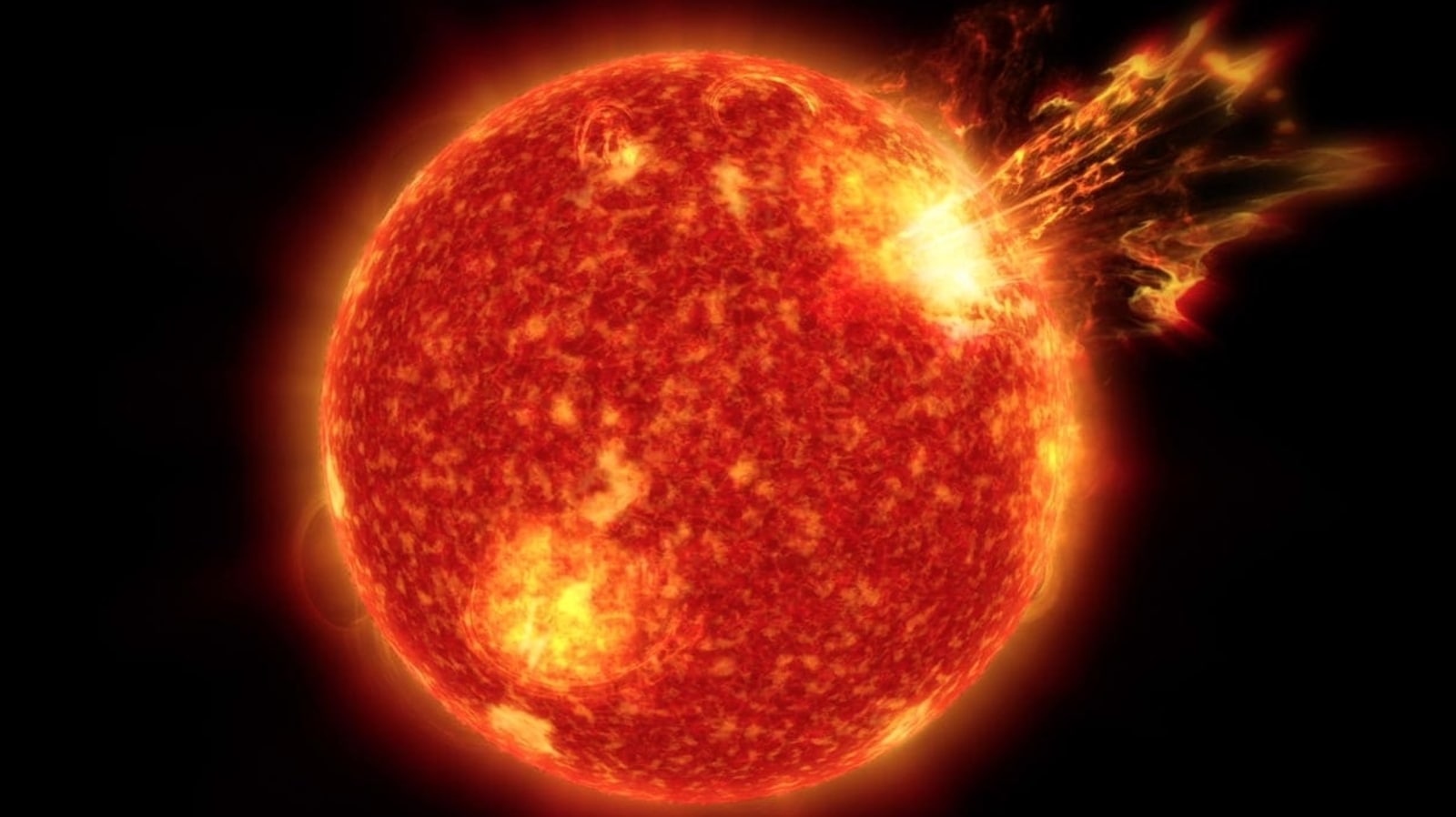Solar storm threat looms as NASA detects sunspots on the far side of the Sun
Farside sunspots have emerged on the Sun and they will soon face the Earth, NASA has revealed. Will these blast solar storms towards us? Find out.






 View all Images
View all ImagesIn the last ten days, the Earth has only suffered one minor solar storm. All the sunspots on the Earth-facing solar disk, which reached as many as 12 at a point, have also disappeared and our planet is enjoying a brief period of calm. But there is a possibility that it is just the calm before the storm! NASA Solar Dynamics Observatory (SDO) has detected two groups of sunspots on the farside of the Sun. As these sunspots slowly turn to face the Earth, there are fears among astronomers that the Earth can again see a phase of high solar activity like it experienced in the first two weeks of January.
The incident was reported by SpaceWeather.com which noted on its website, “Two large sunspot groups are transiting the farside of the sun. We know because NASA's Solar Dynamics Observatory is detecting their helioseismic echoes”. It also added that the sunspots will face the Earth in a week's time.
More solar storms coming for the Earth?
If you're wondering how the NASA SDO was able to see the other side of the Sun, then you should know that the satellite didn't actually see it. It uses a method called helioseismology where it detects the active region on the Sun in a process very similar to how on Earth, seismologists learn about the interiors of the Earth by monitoring earthquakes.
This prediction means that in seven days, the Earth is likely to suffer a similar fate as it did earlier this year. Between January 1 and January 15, the Earth suffered two X-class solar flare eruptions, around three solar storm events caused by coronal mass ejections (CME) and a separate solar storm event where solar winds caused a rip in the magnetosphere of the Earth.
It can also not be sure just how intense these solar storms can be. A particularly powerful solar storm can destroy satellites and disrupt wireless communications such as GPS, mobile networks, satellite phones and even space monitoring systems. They are also capable of taking out internet services, power grids and even crucial electronic devices such as pacemakers and ventilators. For now, we can just hope that the sunspots are not capable of something even remotely close.
Catch all the Latest Tech News, Mobile News, Laptop News, Gaming news, Wearables News , How To News, also keep up with us on Whatsapp channel,Twitter, Facebook, Google News, and Instagram. For our latest videos, subscribe to our YouTube channel.




























